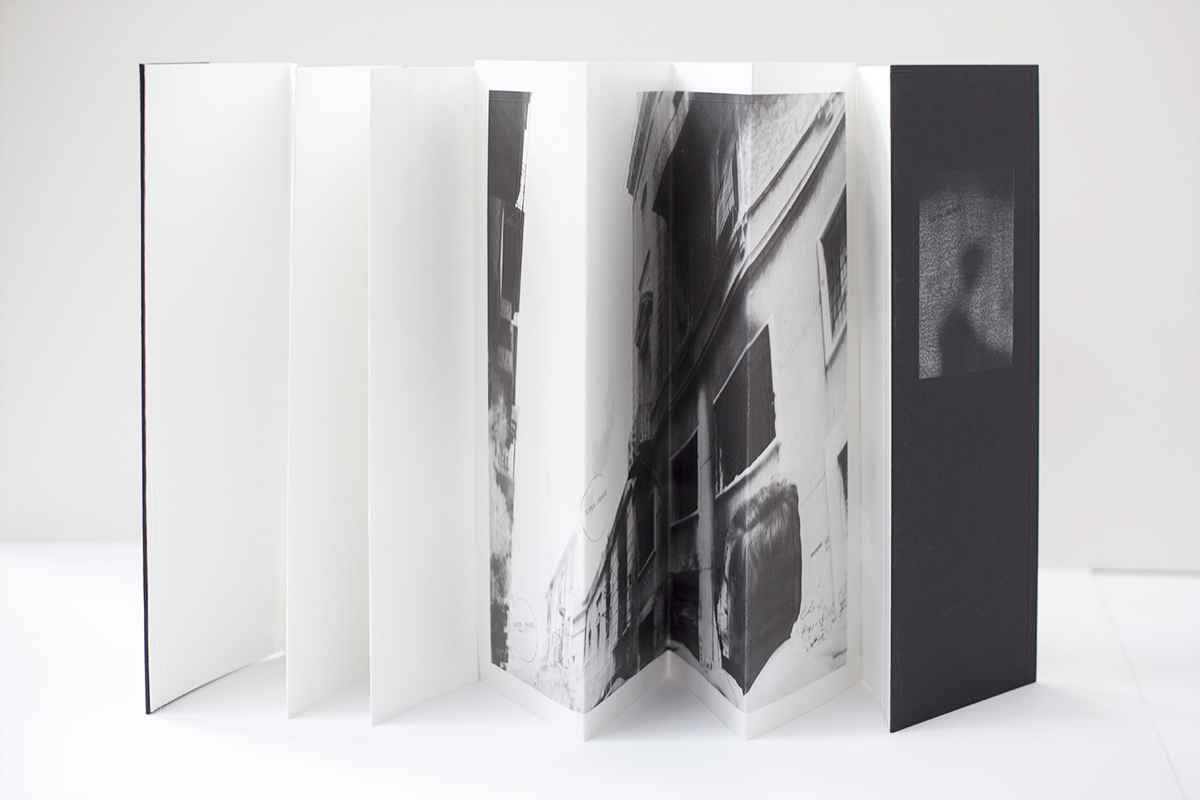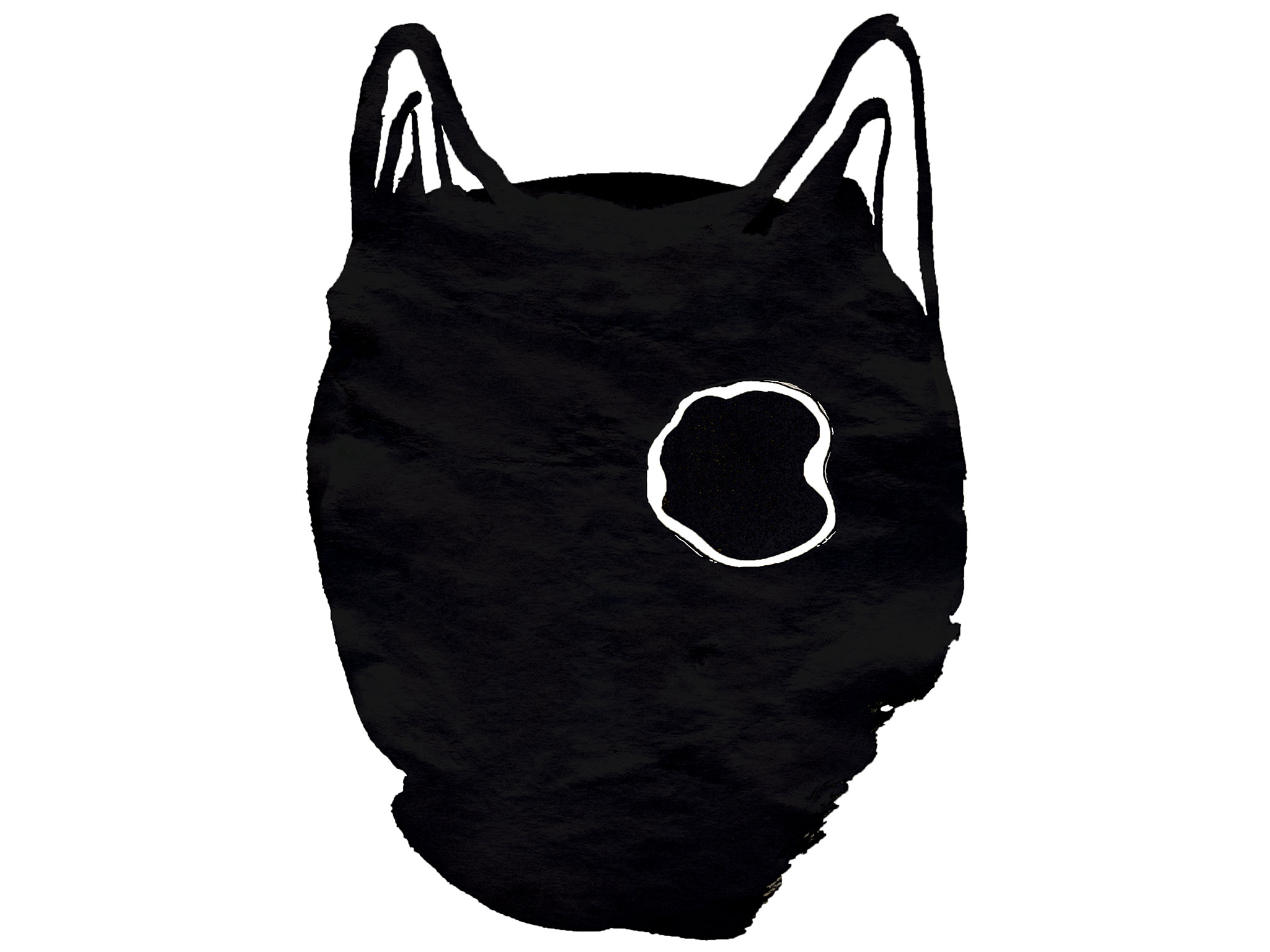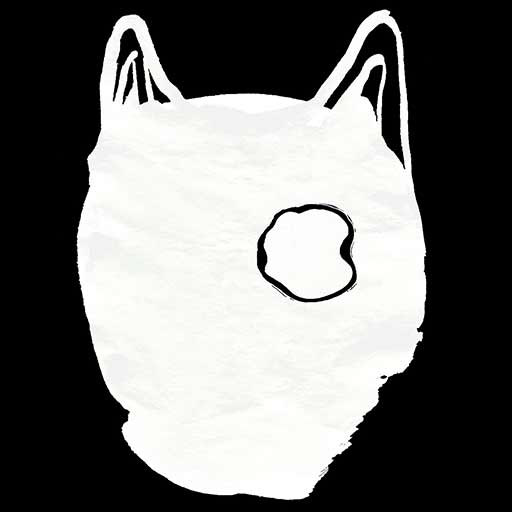"Super Private"
A conversation between PR (paula roush) and EPS,
the anonymous donor of the EPS collection
published in:
SUPER – PRIVATE : SCENES 1 | 2 | 3 | 4 | 5 | 6
accordion bookwork in six volumes
msdm publications
more about the bookwork here [ + ]

EPS: When Arab Image Foundation[1] gave me the prints back for identification, I researched the people, the years, the places in the photographs, and filled in an excel sheet with a reference number for each photo.
PR: I saw that, there is a number for each photograph…I mean, everything is catalogued...archived...
EPS: The films were in wooden boxes, inside two shoeboxes.
PR: Well now they’re in two archival binders, proper acid-free photographic binders.
EPS: I know, and I spent over a week identifying everything... I showed the pictures to my mother to have the names for all the people in the pictures...and what’s her name? (pointing to the photograph of a woman), Rositta. She’s great!
PR: She’s really sporty and athletic...What’s her profession? I am very curious...because she poses so well, she does acrobatics, horse riding, she swims, and she is very good looking.
EPS: Yes, she was from Hungary.
PR: Ok, yes, she has a definitely European look. Do you know anything about her background?
EPS: No, only that she was my uncle’s lover, that’s the only thing I know ...and he brought her to Beirut, because some of these pictures are taken in Beirut, and some in a hotel room.
PR: Yeah, it’s true…I was very curious about her so I did all the research I could, by looking at all the photographs in order they were taken. Was he a bachelor, RS?
EPS: Oui, yes, he was my uncle.
PR: And he is in several pictures, I saw his picture in the album and in the database he is identified as RS...This is quite important because at the Foundation they thought he (the photographer) might be your father. Who is the photographer?
EPS: He is the photographer.
PR: Well, he was a good photographer. Some of the photos are fantastic, beautiful, like he could be a contemporary photographer that photographs the beauty in everyday life.
EPS: Yes.
PR: You see, there are beautiful things, scenes that are staged, and all this people he hangs out with, they are very special, too, they all look very creative. Are they artists?
EPS: Non, no.
PR: They all appear very happy in the pictures, posing.
EPS: He used to work in this building, by the way.
PR: As?
EPS: As a banker.
PR: All right! Ok, so that explains a lot.
EPS: After I gave the films to the Foundation, they were taken to a photo lab to develop and make prints of all the frames, size A6, in black and white. They were placed in the binders, with a number at the back of each picture. That’s when I did the excel sheet and wrote down the names of those I knew and was able to recognize, or if not I would ask my mother if she knew them and the dates, the year. It was quite funny as the cars in the photos helped me find the year, because he used to love cars.
PR: Yes, there are several cars in there.
EPS: Et donc voila, And so, there it is, he was comment on va l’appeler, un homme flamboyant, how do you call it, a flamboyant man, a bachelor, a seducer, and he… this I recall through my grandmother who used to say that he succeeded in everything he did ...he was a bridge player, a tennis champion, practiced target shooting enfin, after all, and he died when he was 54. He died and the souvenir, memory I have is that he had the dinner at his house, and whilst going from his room down the stairs to the dining room... puff... he died that was it, of a heart attack.
PR: There are these two portraits of him and a woman, where they are facing each other, and right after, a similar scene with another woman.
EPS: He must have been seen seeing both.
PR: And there is this one.... and this one...and this one.
EPS: Renée…she is the fist one to appear, than there is the second one, these are his personal photos, no one from the family appears, he had no wife and no children.
PR: So they are like a surrogate family.
EPS: Maybe.
PR: This woman, she appears very young. In the first photos she appears doing acrobatics with another man, and she is very fit. This is the first time she is photographed. Later she appears with RS in the hotel room.
EPS: He never married; he had loads of affairs with many women. There was some overlapping, voila, there it is, and this is he also.
PR: And who is this woman? Maybe his fiancée, bride?
EPS: Yeah but it didn't last. Çá c'est lui, This is he (points to a photo on his laptop screen).
PR: Ah ok, I have never seen those.
EPS: This is Andrée’s sister.
PR: All right…and was Andrée an athlete?
EPS: No.
PR: What was her profession? She also looks so athletic.
EPS: I don’t know...but this is the sister of RS.
PR: Great, I hadn’t seen those. Are they at the Foundation?
EPS: I'm not sure.
PR: So you keep the digital files in your laptop
EPS: I’ve scanned all the family albums
PR: And, do you have a plan?
EPS: No plan... just to have them.
PR: You don't work with photographs?
EPS: No, no.
PR: Because you’re a writer?
EPS: I used to.
PR: And doing books with photography? That doesn't appeal to you?
EPS: No, but photography makes me tell stories, when I saw all these pictures I’m sure it gave me some material for stories.
PR: In what way? To create fiction based on the stories?
EPS: He was a character, I mean he is an interesting personnage, character, RS ...
I think I gave these pictures to the Foundation.
PR: Maybe, I haven’t seen them before ...and who’s in here?
EPS: This is my father.
PR: All right, so RS brother.
EPS: And this is me, this is my grandfather, my sisters, this is my father...my father, this is my aunt, RS sister, this is the same woman I showed you before, I think she was called Rositta, it is what I wrote in the document I gave the Foundation. I received the prints, filled the excel sheet on the computer, and I gave it to.
PR: Also so you know, I’m not researching the family history in depth, I’m more looking at the photos from a poetic and visual perspective, and so I don’t need to know everything. However, what I find very interesting is your role as collector, you are a photography collector, in a way....
EPS: No, they call it collection because its related to a family.
PR: So you don't see yourself as a collector?
EPS: No, I only have all these pictures scanned to transmit them to my children and them to their children, so no, I’m not a photography collector.
PR: So, in terms of placing the photos in the Foundation, is it merely a matter of memory, preserving a memory?
EPS: Oui surement, yes, surely, I was very happy when I found these negatives ‘cause it opened a new door in the story of the family.
PR: Which door was that?
EPS: I never knew him, he died when I was four, done, and I have no memories of him.
PR: And what kind of memories do people keep of him? A flamboyant man ...you said…someone dandy?
EPS: Not that...dandy has a side that is pejorative.
PR: You’re right, dandy is more decadent maybe, and flamboyant is someone who enjoys good things in life…I don’t know much about the way he photographed, but maybe because he was surround by beauty, beautiful people, beautiful places, beautiful horses, beautiful houses, everything looks really nice, and at the Foundation archivists were under the impression that this album contained a secret.
EPS: Ah bon, indeed?
PR: Because they assumed the first woman in the album was his wife, and the others would be his secret lovers, that there was a betrayal, so they were not sure I could work with the photos.
EPS: When I was told, I said ‘yes, of course.’
PR: And I was very happy.
EPS: Everybody’s dead in these pictures, maybe not her, she was the younger (points to a photo of Rositta.)
PR: So from his age, could you figure out her age? How old would she be, if she was alive? If he was alive today…
EPS: …He would be 91 years old, he was born 1904 and she was possibly 8, 10 years younger?
PR: Maybe more.
EPS: Maybe more, you think? She looks that much younger?
PR: Maybe 20 years younger? Well, she looks like twenty here...it’s just that when she starts to dress for him, she adopts the look of a more mature woman.
EPS: Well then she could be 71 now, but she is not Lebanese she is Hungarian.
PR: Would be great to know her name, her profession...
EPS: Her profession... she didn't have one most possibly.
PR: Acrobat… you think?
EPS: He must have met her in a competition, because there are these pictures...
PR: He met her here; the first time she appears on film is at the Corniche (points to a photo of Rositta doing acrobatics by the seaside promenade)
EPS: No, no, I think they met in Budapest, there are pictures of Budapest, and there was this great hotel in Budapest.
PR: Well, the hotel pictures are these ones, the first time they appear in a hotel is here, so it would be this or the second trip they made together ...first she poses in knickers, then she poses completely naked so you can see the relationship develops and she’s more comfortable, and the second hotel could be the European hotel, maybe Budapest?
EPS: But these first pictures are taken in Beirut, those by the seaside, that’s Lebanon.
PR: This one, this is the second hotel.
EPS: Voilá, ça c'est, there it is Budapest!
PR: So that’s the first time they travel together, according to the order of the photographs in the binders, this is the first time she is photographed, before that you only see other women. And is she older here?
EPS: Possibly older, it is difficult to tell…Rositta...
PR: Sounds like an artistic name, Rositta. And this is the one where she poses with a fur coat. She doesn’t look like a very wealthy lady, but on the other hand, at that time did poor people ride horses? Maybe she also came from a wealthy background.
EPS: I think that in some of the pictures I recognise my bedroom that is in Beirut. Voilá, there it is, I think these pictures (points to images of Rositta in knickers, lying in a bed) are not in a hotel, the only thing that gives me a clue that it is a room in Beirut is this bell, over the bed. I’m not sure in a hotel there would be a bell like this. So this would be the family home.
PR: Est-ce qu’ils ont vécu ensemble comme couple? Did they live together as a couple?
EPS: Dans mon imagination, in my imagination it all happened in two weeks they were together, traveling together, then she leaves and he comes back. I’m not sure that they had a long affair but this is my imagination, maybe I'm completely wrong. She is cute, in any case.
PR: They all seem to be living very happy times...it is another vision of Lebanon that I haven't found in other collections at the Foundation, it’s a very modern, modernist, rather, view of the country.
EPS: Yes.
PR: Because the albums held at the Foundation are either family albums donated by families or repositories from photographic studios. These, on the contrary, are very intimate, that is why they are so uncommon… You know when I arrived at the Foundation the Librarian asked me if I had an idea of what I’d like to work with and I said, that being Portuguese, my plan A would be to see if there are any Portuguese photographs in the collections; As to my Plan B, it would be to work with any odd material, anything that escaped the conventions of the archive, something that…
EPS: Has a twist?
PR: Something seedy, sexy, and the librarian said “Oh I know a collection that...doesn’t fit the usual archiving categories…’ and then she showed me the EPS collection.
EPS: That’s right, its very intimate and it was in a wooden box, because Beirut is damp, each role was protected, there was une planche de bois, a plank of wood with holes and in each was a roll, each role was enclosed.
PR: So do you think they never saw their pictures?
EPS: Definitely, no one saw the pictures.
PR: That is very interesting. But wait, there is something intriguing; the photograph of one of the women is also in another collection, AC, donated by another woman collector.
EPS: Yes! Her sister.
PR: Ah ok, so that film must have been developed at some point, because she had it.
EPS: Hum hmm, it’s probably not the same film.
PR: It is exactly the same picture!
EPS: Oh yes, you’re right, its the same, I also saw it in the archives.
PR: So how do you explain that?
EPS: In this building, where he used to work, there was the best shop of appareil de photos, photographic cameras, in the ground floor and we all used to have our photographs developed, not a studio, just equipment and development.
PR: And is that why he had good equipment?
EPS: Maybe.
PR: Ah, and the dates, when could these have been taken? 1920s?
EPS: No, no, late forties, fifties, I would say, in any case after the World War II, after 1945. This is Rositta. When I was researching the photographs I even looked at her wardrobe, and her dress is Molineux, it used to be une maison de couture comme, a fashion house like Chanel in Paris.
PR: That means she wore expensive clothes.
EPS: Moi je pense que c’est lui qui lui achetai des choses chéres, I think it was him who bought her expensive gifts. All the horses and house in the mountains, that is in Sofar, a family house in Lebanon. All the other horses photos are here in Beirut, my father also had a stable with horses.
EPS: I have an instagram account where I put my pictures, voila, that’s it, have a look. You know, Marcel Duchamp, he used to sign ‘Rrose Sélavy,’ well this is New York and a similar type of pun…(points to his Instagram feed in the mobile phone).
PR: So you know quite a lot about contemporary art?
EPS: I used to collect paintings but I stopped.
PR: Why?
EPS: I started in the 70s and stopped in the late eighties, nineties.
PR: I am so happy you gave me the time.
EPS: I am happy these pictures soixante, soixante-dix ans plus tard sixty, seventy years later find a way back into life. Its nice, I mean, really!
PR: Yes, in this project I’m exploring the format of the photobook, and how to use the photographs to build a visual narrative.
EPS: And when do you plan to publish it?
PR: Very soon, first I will publish through my own imprint. I’m also looking at other collections deposited at the Foundation, for example there is the Al-Yom collection from a newspaper that used to be based in Beirut. The editor’s archive was found in waste bins outside his flat, after he passed away. This material is very different from your collection. Most of the photographs are very damaged, so I had to re-photograph them the way they were, torn, curled, and folded, they cannot be flattened or separated without causing further damage to the prints.
EPS: Ah but this is this building where we are now (EPS finds a print of a curled photograph of the building we’re in amongst the Al-Yom’s photographs in my book dummies).
PR: No! No!
EPS: Yes!
PR: That is too much of a coincidence because I love this view it is such a dark corner, looks like there was an explosion here!
EPS: Oui, oui, oui… of course this was the building. This was our building before the restoration. It’s been in the family for 150 years. And this was where RS worked. This was his office (pointing at the photograph).
PR: You’re kidding me!
EPS: The bank was in this floor, this was ground floor, and these the first…and the second floors, I used to come here with my mother when I was a boy. I had never seen this picture.
PR: It was in Al-Yom’s collection.
EPS: Let me make a photocopy.
[1] from hereafter referred to simply as ‘Foundation’

